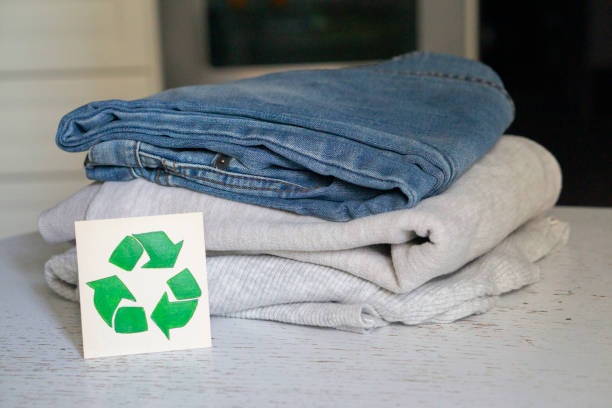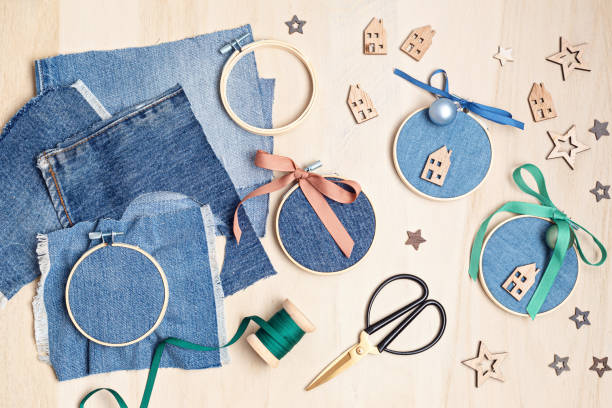Redefining Fashion with Upcycled Apparel
In a world where fast fashion churns out trends at breakneck speed, upcycled clothes offer a refreshing, sustainable alternative that blends creativity with environmental consciousness. Unlike traditional recycling, which breaks down materials, upcycling transforms old garments into fresh, unique pieces, giving them new life. This practice, rooted in repurposed clothing, not only reduces waste but also sparks a movement toward individuality in style. Upcycled fashion challenges the throwaway culture of modern wardrobes, inviting us to rethink how we consume and create clothing.
This article explores the multifaceted world of upcycle apparel, from its environmental benefits to its cultural significance, creative techniques, and growing influence in mainstream fashion. By weaving together practical insights, scientific backing, and innovative ideas, we’ll uncover why upcycled clothes are more than a trend—they’re a transformative force.
The Environmental Case for Upcycled Fashion
The fashion industry is one of the planet’s biggest polluters, contributing roughly 10% of global carbon emissions and generating massive textile waste. Upcycling tackles these issues head-on by keeping garments out of landfills and reducing the demand for virgin materials. For instance, producing a single cotton T-shirt can require up to 2,700 liters of water, according to a 2017 study by the Ellen MacArthur Foundation. Upcycled apparel sidesteps this resource-intensive process by repurposing existing fabrics.
Another compelling argument comes from waste reduction. The Environmental Protection Agency reported in 2018 that 11.3 million tons of textiles ended up in U.S. landfills annually. By transforming old jeans into a chic jacket or a worn scarf into a patchwork dress, upcycling diverts materials from this cycle. A 2020 study in the Journal of Cleaner Production further highlighted that upcycling can cut greenhouse gas emissions by up to 30% compared to producing new garments. These numbers underscore the tangible impact of choosing repurposed clothing over mass-produced alternatives.
Beyond science, upcycling fosters a mindset shift. It encourages consumers to value longevity over disposability, turning a single-use mindset into one that celebrates reinvention.

The Creative Pulse of Upcycle Apparel
Upcycled fashion isn’t just eco-friendly—it’s a canvas for creativity. Designers and DIY enthusiasts alike use techniques like patchwork, embroidery, and deconstruction to breathe new life into old garments. For example, a pair of thrifted trousers might become a statement tote bag, or a faded denim shirt could be reimagined as a cropped, hand-painted jacket. These transformations highlight the individuality of upcycled clothes, as no two pieces are ever identical.
This creative freedom has birthed a vibrant subculture. Independent designers, like those featured at markets like Brooklyn’s Artists & Fleas, often showcase upcycled apparel that blends vintage charm with modern flair. Techniques such as dyeing with natural ingredients (think avocado pits or turmeric) or combining mismatched fabrics create pieces that feel both nostalgic and forward-thinking. This approach not only appeals to eco-conscious consumers but also to those craving unique, story-driven fashion.
Moreover, upcycling empowers anyone with a needle and thread—or even just a vision. Online platforms like Pinterest and YouTube brim with tutorials, from basic hemming to advanced fabric manipulation, making upcycle apparel accessible to beginners and experts alike. This democratization of design fosters a sense of ownership and pride in one’s wardrobe.
Cultural and Social Dimensions of Repurposed Clothing
Upcycled fashion carries deep cultural resonance, often rooted in resourcefulness. Historically, communities worldwide have repurposed clothing out of necessity—think of wartime quilts made from scraps or hand-me-downs tailored to fit new wearers. Today, upcycled clothes bridge this tradition with modern activism, challenging consumerist norms and celebrating heritage. For instance, brands like Zero Waste Daniel use fabric scraps to create gender-neutral pieces, blending cultural commentary with sustainability.
Socially, upcycling fosters inclusivity. It transcends price points, as anyone can thrift a $5 shirt and transform it into something runway-worthy. This accessibility challenges the elitism of high fashion, making style a playground for all. Additionally, upcycled fashion often intersects with social justice. Designers in marginalized communities, such as those in India’s textile hubs, use upcycling to create economic opportunities while preserving traditional craftsmanship. These stories add depth to every repurposed garment, making them more than just clothes—they’re symbols of resilience and ingenuity.
Upcycled Clothes in the Mainstream: A Growing Movement
Once a niche practice, upcycled fashion is gaining traction in mainstream markets. High-end designers like Stella McCartney and Gucci have incorporated repurposed materials into their collections, signaling a shift in the industry. Meanwhile, fast-fashion retailers like H&M have launched “conscious” lines featuring upcycle apparel, though their impact remains debated due to their overall business models.
The rise of social media has also amplified upcycled clothes. Influencers on platforms like Instagram showcase DIY transformations, inspiring followers to try their hand at repurposing. Hashtags like #UpcycledFashion and #SustainableStyle have millions of posts, creating virtual communities that celebrate creativity and eco-awareness. This visibility has pushed retailers to respond—Urban Outfitters, for example, now sells curated vintage and reworked pieces alongside new stock.
However, mainstream adoption raises questions. Can upcycled fashion retain its authenticity as it scales? Small-scale designers argue that mass-produced upcycling risks losing the craft’s soul. Yet, the growing demand for repurposed clothing suggests a cultural tipping point—one where sustainability and individuality take precedence over fleeting trends.

Practical Steps to Start Your Upcycling Journey
Ready to dive into upcycled clothes? Start small. Visit a thrift store or raid your closet for items with potential—think sturdy denim, oversized shirts, or patterned scarves. Basic tools like scissors, a sewing kit, and fabric dye can go a long way. For inspiration, platforms like Etsy showcase upcycled apparel, from reconstructed sweaters to hand-stitched skirts.
Begin with simple projects: turn an old T-shirt into a tote bag or add patches to worn jeans. Online communities, such as Reddit’s r/Upcycling, offer tips and feedback. If sewing isn’t your strength, no-sew techniques like knotting or fabric gluing can still yield stunning results. The key is experimentation—upcycling thrives on trial and error.
For those seeking structure, workshops and classes (both online and in-person) teach skills like pattern-making or fabric distressing. Local craft stores or community centers often host these, fostering connections with fellow upcyclers. As you grow, consider sharing your creations on social media to inspire others or even sell your pieces on platforms like Depop.
The Future of Upcycled Fashion
The trajectory of upcycled clothes points to a future where sustainability and creativity dominate fashion. Innovations like 3D printing with recycled fibers or biodegradable dyes could further reduce environmental impact. Meanwhile, collaborations between tech companies and designers are exploring ways to streamline upcycling processes without sacrificing artistry.
Consumer demand will shape this evolution. As awareness of fast fashion’s toll grows, more people are seeking alternatives like repurposed clothing. Governments may also play a role—policies like the EU’s 2022 Strategy for Sustainable Textiles push for circular fashion systems, incentivizing upcycling. This synergy of innovation, demand, and policy could make upcycle apparel a cornerstone of global wardrobes.
Yet, challenges remain. Scaling upcycling without compromising its ethos requires careful balance. Education is also key—consumers must understand that upcycled fashion isn’t just “secondhand” but a deliberate, artful choice. By championing this mindset, we can ensure upcycled clothes remain a vibrant, meaningful movement.
A Wardrobe Revolution
Upcycled fashion is more than a response to environmental crises—it’s a celebration of creativity, individuality, and resilience. By transforming old garments into new treasures, upcycled clothes challenge us to rethink our relationship with fashion. Whether you’re a DIY enthusiast, a conscious consumer, or simply curious, upcycling invites you to join a revolution that’s as stylish as it is sustainable. Start small, experiment boldly, and wear your values with pride.
